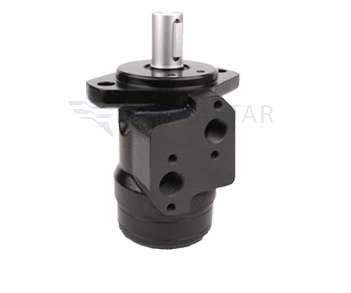
There are three well-known types of hydraulic motor: gear, vane, and piston. This trio has many colourful varieties and subtypes. As such, ‘every build’ will be a little different. However, there are some commonly used parts. Getting these wrong, or failing to maintain them, can lead to hydraulic system failure. Here’s a guide to the three most common parts, and why they matter.
But Firstly, What Is A Hydraulic Pump?
A hydraulic system operates by a vacuum, and the pump is its mechanical heart. This is able to convert mechanical energy into hydrostatic energy, creating a regular pulse of pressure that forces liquid to move steadily. Whether they are gear, piston, or vane, the most familiar hydraulic pumps involve ‘positive displacement’ mechanics. This means that there is very little slippage, and the movement is very even.
However, positive displacement hydraulic pumps can go horribly wrong if they are not correctly maintained. Their potential explosive demise has been well documented on video. The DIY disaster films may be amusing, but the reality is far from funny when it happens inside a machine. The immediate casualties are usually all of the connected equipment, as well as structural parts and – potentially – operators.
1. The Inlet
This is also known as the ‘suction port’, and is the vacuum chamber that enables hydraulic fluid to enter the system. The main problem with inadequate inlets is that they allow fluid contamination, especially when aged lines become porous. This may sound like a minor inconvenience, but it can lead to major problems.
Contaminated hydraulic fluid wears out the pumps and valves, leading to inefficiencies, downtime, and productivity loss. To avoid this, always ensure that the inlet is the same brand as the rest of the pump. Opt for a recognised manufacturer that has high levels of quality guarantee.
2. The Valves
Even with the cleanest hydraulic fluid, poor valves can wreak havoc on a system. Valves are the hydraulic control mechanisms, so their failure leads to pressure problems and drift issues. This failure can be due to an inadequate inlet that has contaminated the system and damaged the valve, but is more often because incorrect components have been used.
The result is an operator having to constantly adjust output to control pressure, which is both time-consuming and inefficient. The golden rule is to have the right valve in the right place, and to make sure that the valve is of the correct quality for the demands of the machine.
3. The Reservoir & Seals
The hydraulic fluid reservoir is easily overlooked. However, the quality of the shaft seals makes a significant difference to system performance. Damaged seals result in air intrusion, which makes itself known in the form of loud bangs and unnatural vibrations.
Air ruins hydraulic fluid, overheating the system and burning through other seals. This perpetuates the problem by allowing more air to enter. The process normally starts with the basic maintenance error of forgetting to monitor hydraulic fluid levels. Too little fluid, and an unhealthy vortex forms. Keeping the reservoir clean, maintained, and fully topped up is therefore vital.
What Next?
For more information about hydraulic parts and maintenance, contact Hydrastar today on 01353 721 704.


